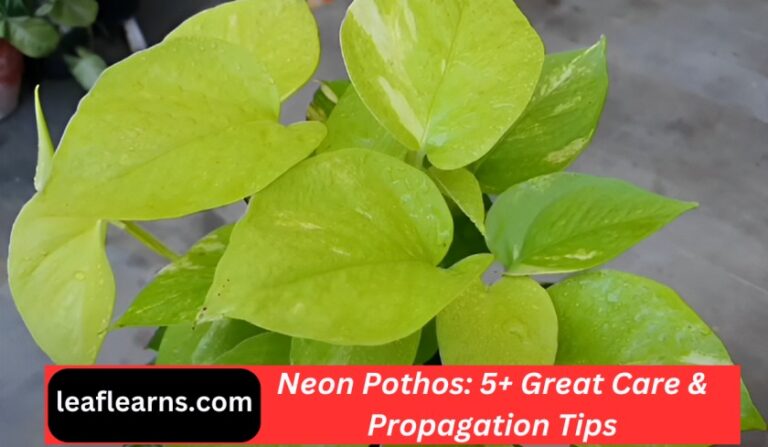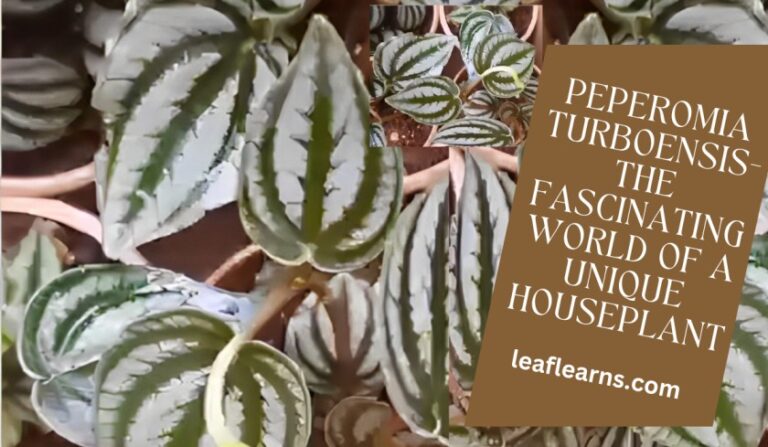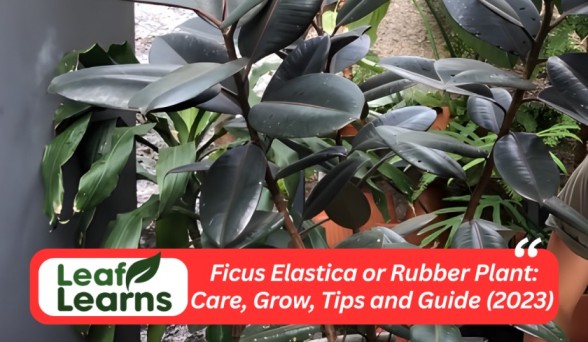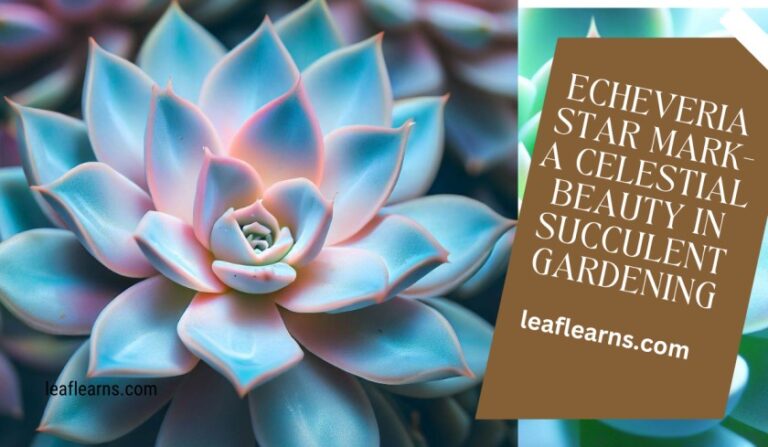Echeveria Laui ‘La Roseta’ Care and Grow Guide (2023)
Plant enthusiasts worldwide have fallen in love with Echeveria laui, a captivating succulent native to Mexico’s Oaxaca region that has powdery blue-green leaves tinged with pink. Its cultivators will be rewarded with mesmerizing displays of resilience and elegance if they carefully tend to this slow-growing gem.
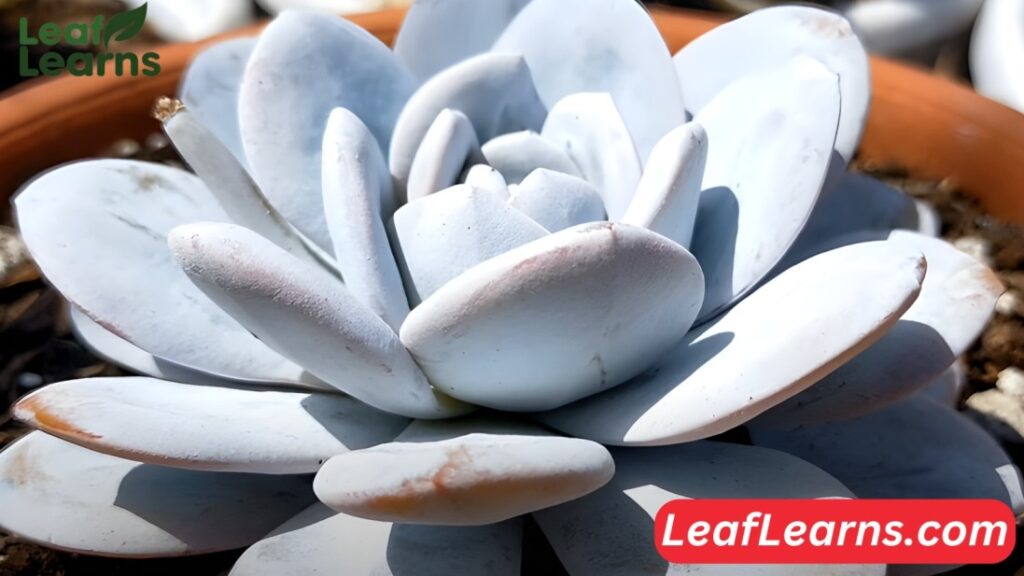
Contents
- 1 Nurturing Echeveria-Laui
- 2 A Symphony of Beauty
- 3 What is Echeveria-laui?
- 4 What’s Unique About Echeveria-laui?
- 5 Top Care Tips
- 6 Echeveria laui Care
- 7 How to propagate Echeveria laui
- 8 Pruning
- 9 Repotting
- 10 Blooming and Appearance
- 11 Common Problems and Solutions
- 12 Toxicity
- 13 Varieties/Types
- 14 Suggested Uses
- 15 Echeveria-Laui in Different Regions
- 16 Addressing queries like where to buy, pricing, and online availability
- 17 Echeveria Laui: Aesthetic Pleasure and Eco-Conscious Benefits
- 18 Unlocking Full Potential: Geographical Aspects of Echeveria Laui Care
- 19 Conclusion
- 20 FAQs
Nurturing Echeveria-Laui
Natural desert habitats are bright, indirect sunlit places, where Echeveria laui thrives. As a result of its well-draining soil, the plant’s roots remain healthy, while its leaves remain plump and vibrant by watering infrequently but thoroughly. Succulents suffer from root rot when overwatered, leading to eventual death.
| Common Name | La roseta |
| Scientific Name | Echeveria-laui |
| Family | Crassulaceae |
| Origin | Mexico |
| Plant Type | Succulent |
| Size | Compact rosette, 6-8 inches (15-20 cm) in diameter |
| Lifespan | Perennial |
| Leaf Colour | Powdery blue-green |
| Leaf Size | Spoon-shaped, 2-3 inches (5-8 cm) |
| Flower | Pink to coral-colored, bell-shaped |
| Light | Full sunlight to partial shade |
| Water | Low water needs, well-draining soil |
| Soil | Sandy or cactus mix |
| Temperature | 60-75°F (15-24°C) |
| Humidity | Low |
| Fertilizer | Balanced liquid fertilizer during growing season |
| Propagation | Leaf cuttings, offsets, seeds |
| Pruning | Remove dead leaves and spent flowers |
| Pests | Susceptible to aphids and mealybugs |
| Toxicity | Mildly toxic to humans and pets |
| Uses | Ornamental, rock gardens, container gardens |
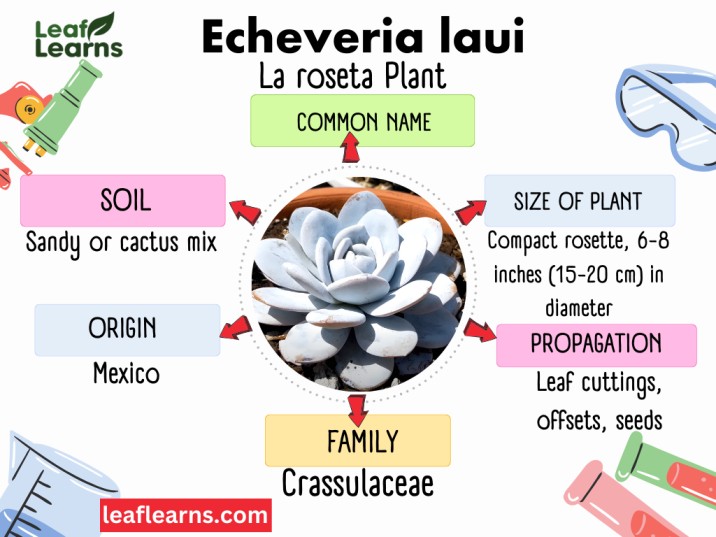
A Symphony of Beauty
A healthy, loving environment yields the greatest results for Echeveria-laui. Under the gentle gaze of the sun, its powdery leaves expand, showcasing their captivating colors.
The yellow blooms of this plant radiate radiant charm throughout the spring and summer months.
What is Echeveria-laui?
A popular succulent plant, Echeveria laui is known for its powdery blue-green leaves and distinctive rosette shape. This slow-growing perennial grows in rocky slopes and crevices throughout Oaxaca, Mexico.
Basic characteristics
As a member of the Crassulaceae family, Echeveria-laui is part of the diverse group of succulent plants known as Crassulaceae. The leaves are spoon-shaped and form symmetrical rosettes in a compact arrangement. A powdery farina coating gives the leaves a velvety, soft feel.
Origin and natural habitat
Mexico’s central highlands, especially in the state of Oaxaca, are home to La Roseta plant. Arid regions are the natural habitat for this plant, which clings to rocky outcrops and cliffs.
In addition to storing water in its thick leaves, farina in the plant reflects sunlight to prevent it from overheating.
What’s Unique About Echeveria-laui?
A delicate powdery coating known as farina accentuates the pastel color of its rosettes of plump, rounded leaves. It serves as a barrier against harsh environmental conditions as well as an aesthetic touch.
Rare or special traits that make it a sought-after species
Echeveria is more than just a pretty plant. Rare and resilient, as well as its ability to thrive indoors or outdoors, have made it a highly sought-after species among succulent enthusiasts.
Echeveria adds elegance and sophistication to any space, whether it is on a windowsill or in a garden bed. Despite its unassuming nature, this plant is easy to care for, making it a good option for beginners as well as experienced gardeners.
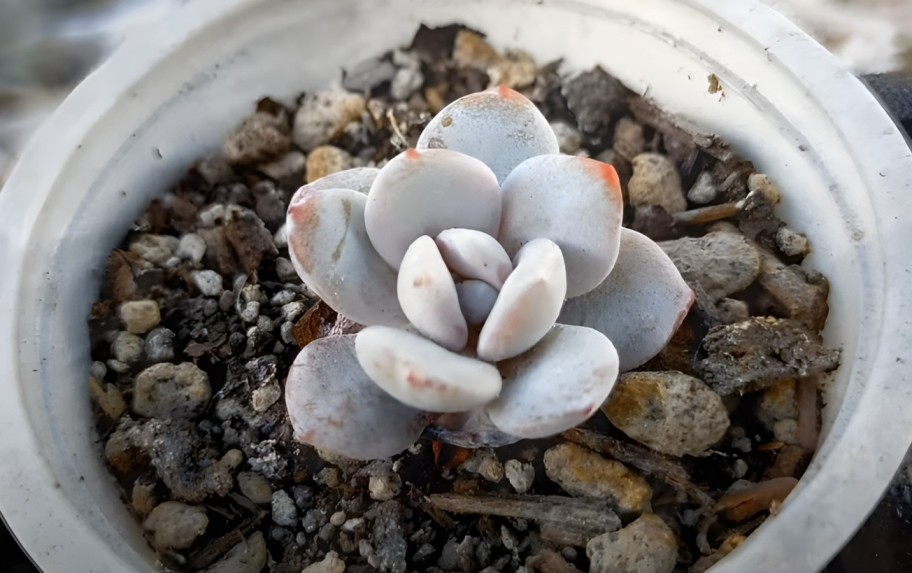
Top Care Tips
Bright, indirect sunlight is essential for Echeveria-laui to thrive. If it gets harsh afternoon sun, place it near a south-facing window or outdoors.
Make sure succulent leaves aren’t underwatered: Succulent leaves store water. During cooler months, allow the soil to completely dry between waterings.
Well-drained soil: The roots of this plant need to be well drained. For ample aeration and drainage, use a succulent or cactus mix.
Optimal Temperature: 65°F to 80°F is ideal for this plant. Keep it away from extremes.
Potting Rhythms: Each two to three years, repot your La Roseta plant using a slightly larger pot.
Watch for pests and diseases such as mealybugs and aphids. Neem oil or insecticidal soap can treat infestations rapidly.
Echeveria laui Care
Light Requirement
In addition to having rosette-shaped leaves and pastel pink or blue hues, Echeveria-laui is known as the “Rose of Echeveria.”
This plant performs well in bright, indirect sunlight and can withstand up to six hours of direct sunlight per day.
However, in order to prevent sunburn, the plant needs to be gradually acclimated to full exposure to the sun.
Light Schedule
- Provide shade during the afternoon in the summer to protect La Roseta plant from intense heat in the morning.
- Plants should be placed near south-facing windows during winter to maximize light exposure. Use a grow light to supplement natural light if necessary.
- During spring and fall, this plant grows best because of the less intense sunlight and more consistent temperatures. A location with plenty of sunlight during the day is ideal for the plant.
Tallness
It typically grows from 6 to 8 inches high, and spreads from 8 to 10 inches wide. Various factors can affect its growth rate, including light exposure and watering frequency.
Water Requirements
The soil should be allowed to dry completely between waterings to mimic its natural habitat and prevent overwatering.
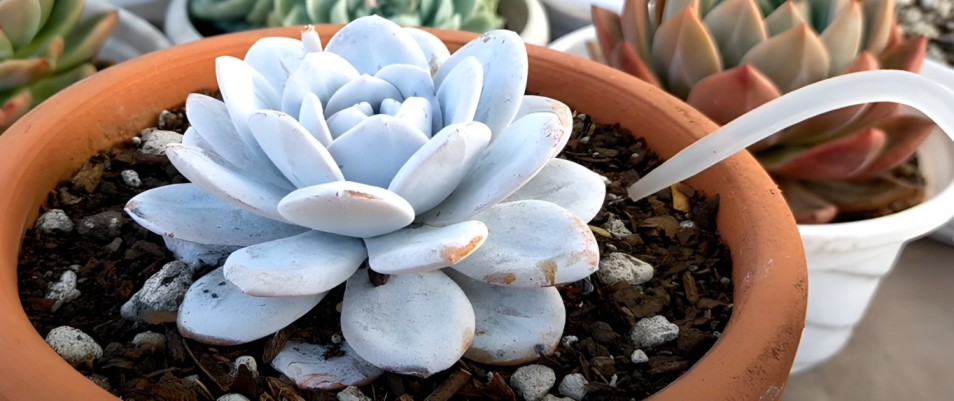
Watering Schedule
- Water the soil every 1-2 weeks during the summer, ensuring that the soil is completely dry before you water.
- When the plant’s growth slows during winter, water it once a month or less.
- Water the plants every 2-3 weeks in the spring and fall, depending on their needs and weather conditions.
Soil Requirement
This captivating succulent enjoys well-draining soil with its powdery lavender-gray leaves and subtle pink edges. In summer, this plant prefers a warmer climate while in winter, it prefers a chillier one.
Summer: It can succumb to root rot when the soil mix retains moisture while letting excess water escape. Perlite, coarse sand, and potting mix are ideal combinations.
Water needs for Echeveria-laui decline in winter as temperatures dip. Between waterings, the soil should be allowed to dry out thoroughly during this dormant period. Cactus and succulent mixes should be well-drained.
La Roseta plant’s soil requirements change during spring and fall when it is actively growing. The nutrients needed for healthy growth can be provided by a slightly richer potting mix amended with perlite or pumice.
Echeveria-laui prefers a pH range between 6.0 and 7.0, regardless of the season. Root growth and nutrient absorption are promoted with this range.
Temperature Requirement
In order to flourish, this plant requires specific temperatures. Temperatures between 65°F and 70°F (18°C and 21°C) are ideal during the summer months.
Temperatures down to 50°F (10°C) are tolerated by Echeveria-laui as the winter approaches. Nevertheless, frost must be avoided to prevent irreparable damage to the plant.
La Roseta plant thrives in temperatures between 55°F and 75°F (13°C to 24°C) in spring and fall. During these mild temperatures, the plant actively produces its stunning rosettes.
Humidity Requirement
Despite its low to moderate humidity tolerance, Echeveria-laui can thrive in any environment. La Roseta plant prefers temperatures of 40-60% in the summer, when temperatures are high.
Its native habitat is arid, which is reflected in an average humidity of just 30-40% when the seasons change.
It is better to plant Rose of Echeveria in spring or fall when temperatures are milder and humidity levels range from 30-50%.
Throughout the year, maintaining a consistent level of humidity is crucial for optimal growth and overall well-being.
Fungal diseases can develop in overly humid conditions, while leaf dehydration can occur in excessively dry conditions.
Fertilizer Requirement
In order for Echeveria-laui to grow well, minimal yet crucial fertilization is required. Every two weeks during spring and summer is the best time to apply a balanced succulent fertilizer that has been diluted to half-strength.
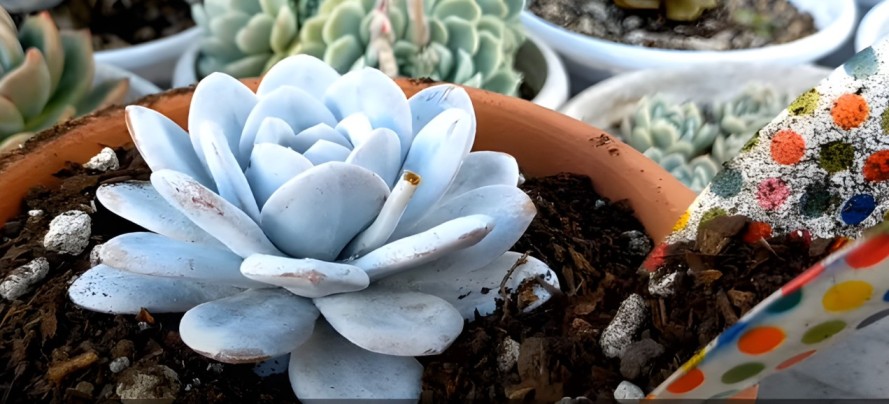
Growth and coloration are both boosted by this gentle boost of nutrients.
To mimic the plant’s natural resting phase, fertilization should be halted during the winter dormancy period. You can revitalize Echeveria-laui in the spring by resuming fertilization with renewed vigor.
An over-fertilized plant can suffer root burn and stunted growth as a result of over-fertilization. Avoid overfeeding your plant with excessive nutrients by using less frequent, diluted applications.
Potting Requirement
In order to thrive, the charming succulent La Roseta plant requires a well-draining potting medium. Adding perlite or pumice to cactus and succulent mixes during the summer can prevent overwatering.
Watering should be reduced as winter approaches and clay pots can provide enhanced drainage.
Your plant can be repotted in spring and fall, choosing a pot just one size larger than its current pot. Rose of Echeveria thrives all year long with adequate drainage to prevent root rot.
How to propagate Echeveria laui
Echeveria-laui can be successfully propagated through two primary methods: leaf, Offsets and Seeds methods. Each method offers its advantages and is suitable for different purposes.
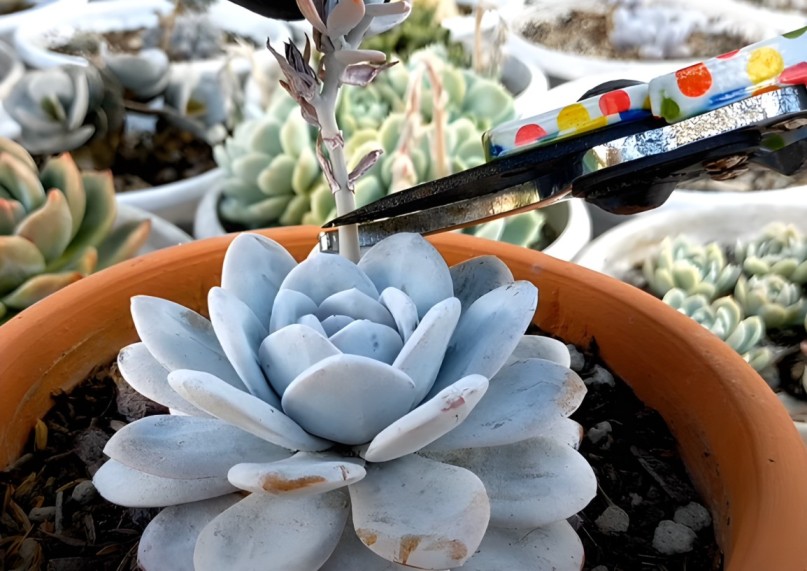
Leaf Propagation
An La Roseta plant can produce multiple rosettes by leaf propagation. Here’s a step-by-step guide:
- Pick Healthy Leaves: Select healthy, mature leaves from the outer layer of La Roseta plant. Leaves that are damaged or discolored should be avoided.
- Detach leaves from stems by gently twisting them at their bases. Prevent moisture loss and fungal infection by allowing the leaf to callus over.
- In order to propagate succulents and cacti, you will need a shallow tray filled with a well-draining potting mix formulated specifically for these plants. Avoid overwatering the soil by moistening it slightly.
- Ensure the base of each leaf is in contact with the soil before placing the calloused leaves on top of the moist potting mix. It is not a good idea to bury the leaves deeply.
- Indirect light should be provided by misting the leaves lightly to provide humidity. Provide bright, indirect light for the propagation tray. The delicate leaves can be scorched by direct sunlight.
- The soil moisture level should be monitored and misted periodically to maintain humidity. Overwatering can cause root rot, so be careful not to do so.
- Watch for roots to emerge from the leaves’ base after a few weeks. You can gently transplant the baby rosettes into individual pots once the roots are about an inch long.
Offsets Method
Gathering the Necessary Materials
Before you begin the propagation process, gather the following materials:
- Echeveria-laui plant with offsets
- Sharp, sterilized knife or pruning shears
- Potting mix for succulents that drains well
- Small pots or containers
- Spray bottle
- Gloves (optional)
Preparing the Offsets
- Offsets should be gently removed from the mother plant. Offsets should be carefully separated from the mother plant using a sharp, sterilized knife or pruning shears. Offsets will have a better chance of surviving if there are roots attached.
- The offsets should callous over. The cut ends should be placed in a dry, shaded area for a few days to callous over. In this way, disease and rot will be prevented.
Planting the Offsets
- Prepare the pots. A succulent potting mix that drains well should be used for small pots or containers. Drainage holes are essential for preventing waterlogging in pots.
- Plant the offsets. Place the offsets gently in the potting mix by inserting the calloused ends into it. If your plants are growing on a mother plant, make sure they are planted at the same depth.
- Water the offsets lightly. Mist the offsets lightly with water with a spray bottle. Root rot can result from overwatering.
Aftercare
- Indirect light is best for the pots, so place them somewhere bright. Bright, indirect light is ideal for Echeveria-laui. Direct sunlight can scorch their leaves, so avoid placing them there.
- Offsets should be watered sparingly. Water your plants only when the potting mix is completely dry between waterings. Succulents are most commonly killed by overwatering.
- Be patient. Developing strong root systems and showing signs of growth may take several weeks for offsets.
Through Seed propagation
Gathering Materials
Before embarking on your seed propagation journey, ensure you have the necessary materials:
- Online or at specialized succulent nurseries, you can purchase La Roseta plant seeds.
- If you want to prevent waterlogging, choose seed-starting trays or shallow containers with drainage holes.
- Suitable for cactus and succulents, this well-draining mix allows roots to develop optimally.
- Mist the soil and maintain humidity with this spray bottle.
- Keep seeds moist by wrapping them in clear plastic or using a seed propagation dome.
Preparing the Seeds
- In a small bowl, fill distilled water with seeds and soak 24 hours. Seed coats are softened and germination is promoted.
- The seeds should be drained and gently patted dry with a paper towel once they have been drained of excess water.
Sowing the Seeds
- Spray the seeds-starting trays or containers lightly with water to moisten the potting mix.
- In a moistened potting mix, sprinkle the seeds evenly. In humid conditions, damping off thrives, so do not overcrowd the seeds.
- Mark each container clearly with the date you sowed the seeds and the type of Echeveria seeds you used.
Creating a Humid Environment
- Maintain humidity in seed-starting containers by covering them with clear plastic wrap or seed propagation domes.
- Ensure that the containers are placed in a warm, bright location. The delicate seedlings can be scorched by direct sunlight.
Monitoring and Care
- Regularly check humidity levels by lifting the plastic wrap or dome every day. It is recommended to mist the soil if it appears dry.
- Depending on the conditions, germination can take up to four weeks. To ensure proper air flow, remove the plastic wrap or dome once the seeds have germinated.
- During the first few weeks after seedlings emerge, it may be necessary to thin them to prevent overcrowding. Leave the strongest seedlings in place after gently removing excess seedlings with tweezers.
- Allow the soil to dry between waterings and water the seedlings sparingly. Rotted roots can be caused by overwatering.
- Putting the seedlings in separate containers, filled with fresh cactus and succulent potting mix, as they grow will be necessary as the seedlings become larger.
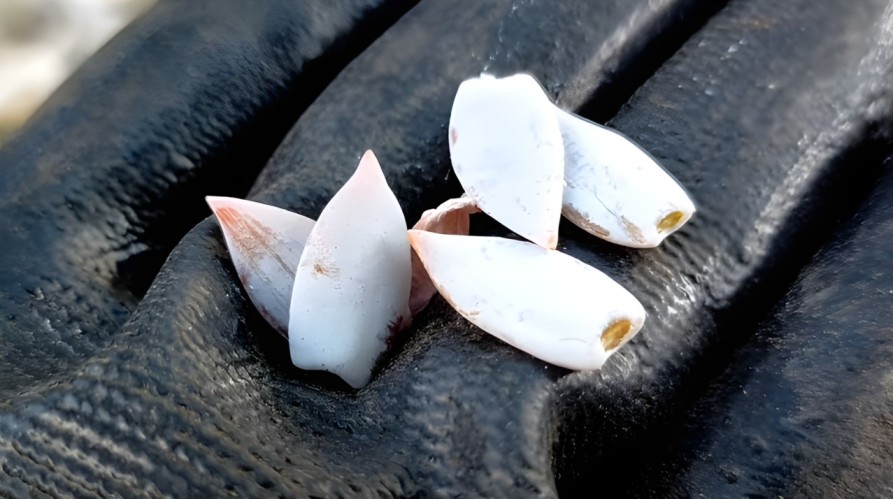
Pruning
- To promote new growth and prevent disease spread, deadhead any dying or dead leaves.
- You should prune your Rose of Echeveria stems gently if they become leggy or elongated.
- Echeveria-laui can be rejuvenated by beheading, allowing the healthy stem to regenerate.
Repotting
- This plant should be repotted when its roots start showing through the drainage holes or when the pot is too small.
- A slightly larger pot will ensure adequate drainage; select one that is slightly larger than your current container.
- Choosing the right potting mix is crucial to ensuring succulents and cacti flourish.
- Gently dig the soil up from the bottom of the pot and then repot the plant in the new potting mix, loosening any tightly bound roots.
Blooming and Appearance
How to encourage blooming
Echeveria lau can be coaxed into blooming with a touch of nurturing care. Here’s how to unlock the floral beauty of this charming succulent:
- An abundance of sunlight is essential for La Roseta plant to thrive, at least 6-8 hours per day is ideal. If it can be placed outdoors in a sunny location, position it near a south-facing window.
- Keep succulents well-watered: Succulents are water-efficient, so avoid overwatering them. Infrequent waterings should be allowed to dry the soil completely.
- Every few months, provide succulent fertilizer diluted to half strength during the growing season.
- Maintain a temperature range of 65-75°F (18-24°C) to mimic the native environment. Extremes of temperature should be avoided.
- In order to promote root growth, repot every 2-3 years so the roots have fresh soil to work with. Waterlogging can be prevented by choosing a pot with drainage holes.
Detailed description of appearance, foliage, and fragrance
The leaves are tightly packed together in a spiral pattern, giving the plant a plump and compact appearance. The edges of the leaves are often tinged with pink or red, adding a touch of color to the plant’s overall aesthetic.
Foliage
As a rosette, the leaves of Echeveria-laui typically measure 2-3 inches in length and 1-2 inches in width. Leaf surfaces of La Roseta plant are smooth and waxy, with thick, fleshy leaves.
The plant’s characteristic blue-green hue comes from a fine layer of farina, a powdery substance. There are rosette-shaped leaves that grow in the middle and fall off as they age.
Fragrance
Its flowers emit a sweet and delicate scent that makes it a fragrant succulent plant.
It blooms primarily in spring and summer, with small, bell-shaped flowers. Honey or almond extract are often compared to the aroma of La Roseta plant.
Overall Appearance
Growing Echeveria-laui indoors or outdoors is easy, as it is a compact succulent plant. Plants such as this can thrive under a variety of conditions, and they are relatively easy to maintain.
Any home or garden will benefit from the elegant appearance and delicate fragrance of Rose of Echeveria. Slow-growing Echeveria-laui becomes mature after 2-3 years.
Flowers
Summer is a time when La Roseta plant produces small, bell-shaped flowers on the center of the rosette.
A splash of color adds to the plant’s serene beauty with flowers ranging from pale yellow to deep orange.
Common Problems and Solutions
Problem: Yellowing Leaves
Solution:
It is often indicative of overwatering when Echeveria-Laui leaves turn yellow. Well-draining soil is ideal for succulents, including Laui.
Allow the soil to dry completely between waterings, and adjust your watering schedule. To prevent water accumulation, make sure the pot has drainage holes.
You should trim yellowed leaves to allow your plant to focus on healthy growth.
Problem: Leggy Growth
Solution:
Insufficient sunlight may explain leggy stems of La Roseta plant. It is recommended that these succulents receive at least 6 hours of direct sunlight daily.
You can also supplement your plant with artificial grow lights or move it to a sunny spot. To encourage bushy, compact growth, trim leggy stems. To ensure even exposure to sunlight, rotate the pot regularly.
Problem: Pests, such as Aphids or Mealybugs
Solution:
Keeping your plant healthy requires combating pests. Use a soft brush or cloth to apply a mixture of water and dish soap to remove pests.
Neem oil or insecticidal soap can be used to treat severe infestations. Keep the affected succulent isolated for a period of time to prevent pests from spreading to other plants.
Problem: Wrinkled or Shriveled Leaves
Solution:
Leaves that are wrinkled indicate dehydration. Make sure you water thoroughly when the soil is dry, and adjust your watering routine accordingly.
You may need to soak your La Roseta plant thoroughly after prolonged submersion. Finding the right balance will depend on how the plant responds.
Problem: Black Spots or Rot
Solution:
Having black spots on the leaves indicates fungal issues or overwatering, resulting in rot. Sterilized scissors should be used to remove affected leaves so that they do not spread further.
Water the soil less frequently, allowing it to dry completely before watering again. Root rot can be treated by repotting, using fresh, well-draining soil.
Problem: Lack of Blooming
Solution:
Insufficient sunlight may prevent Echeveria-Laui from blooming. Direct sunlight should be provided to the plant.
During the growing season, fertilize the plant with a balanced fertilizer. It takes some time for Echeverias to bloom, so be patient.
Problem: Stunted Growth
Solution:
Inadequate nutrients can cause stunted growth. A liquid fertilizer diluted to a balanced strength is recommended during the growing season for this type of plant.
Make sure the soil is well-drained and nutrient-rich. Make sure that growth is not hindered by pests or diseases.
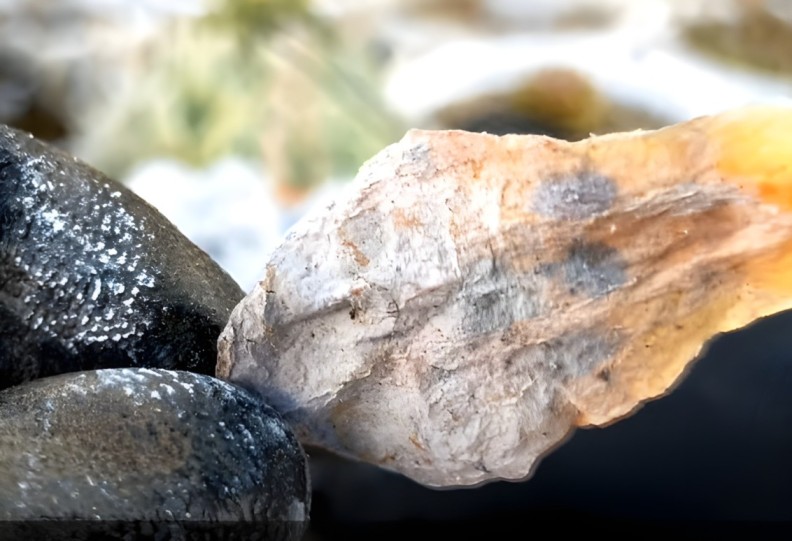
Toxicity
Potential toxicity for humans
Humans are not considered to be at risk from Echeveria-laui. Although it may cause some mild gastrointestinal upset, it should not be eaten.
It is possible to experience nausea, vomiting, and diarrhea after swallowing Rose of Echeveria. Contact a poison control center or a healthcare professional if you or someone you know has consumed This plant
Impact on cats and dogs
Cats and dogs are also not affected by Echeveria-laui. Nevertheless, pets may be tempted to chew on it, so keep it out of their reach.
The symptoms of gastrointestinal upset may include vomiting or diarrhea if your pet ingests Echeveria-laui. Your veterinarian should be contacted if you have any concerns.
Varieties/Types
- Echeveria-Laui x Colorata
- Echeveria-Laui x Cuspidata
- Echeveria-Laui x Mexican Monster
- Echeveria-Laui Hybrids
- Echeveria-Laui Variegata
- Echeveria-Laui White
- Echeveria-Laui Pink
Suggested Uses
A stunning ornamental plant, this plant can add a touch of elegance to your home or office. Pale green leaves form rosettes, making it a captivating plant with a compact size that can be used in a variety of settings.
In rock gardens and other landscaping projects, La Roseta plant works well as a groundcover. Heat and drought are not a problem for this low-maintenance plant, making it an ideal choice for challenging environments.
Choosing Echeveria-laui for container gardening is a popular choice. Succulents look great grouped together in pots and planters, and they can be grown in a variety of pots and planters.
Echeveria-laui is known to purify the air as well as other succulents. Indoor air quality is improved by removing toxins like formaldehyde and benzene.
It is a great gift plant for any occasion: La Roseta plant is one of the best plants for any occasion. Anyone who receives this plant is sure to appreciate its beauty and uniqueness.
Echeveria-Laui in Different Regions
Embrace the Sun
- Challenge: Australia’s sun can be intense.
- Solution: Make sure your Echeveria-Laui is in a shady or filtered area during midday, especially when it is hot.
Adapt to Arid Conditions
- Challenge: Water scarcity in arid regions of Australia is a concern.
- Solution: Increase the frequency of watering according to the dry conditions. Ensure that the soil has thoroughly dried between watering sessions by applying water sparingly.
Mindful Watering Practices
- Challenge: Coastal areas experience varying humidity levels.
- Solution: Monitor moisture levels closely in humid coastal areas. Depending on humidity, adjust the frequency of watering to prevent a waterlogged soil.
Choose the Right Soil Mix
- Challenge: Diverse soil types across regions.
- Solution: Use a well-draining succulent or cactus mix, adjusting slightly depending on your soil.
Weather the Temperature Extremes
- Challenge: Varying temperatures from tropical to temperate zones.
- Solution: Echeveria-Laui tolerates a variety of temperatures well. Colder regions should be protected from extreme temperatures, especially frost.
Pest Vigilance
- Challenge: Diverse pests in different regions.
- Solution: Keep an eye out for pests such as mealybugs and aphids regularly. For effective control, use insecticidal soap or organic remedies.
Celebrate Seasonal Changes
- Challenge: Contrasting seasons in different parts of Australia.
- Solution: Maintain a seasonal routine for caring for your skin. Protect yourself from frost during cooler months by reducing watering. In warmer seasons, ensure ample sunlight for optimal growth.
Australian Varietal Considerations
- Challenge: Different Rose of Echeveria varieties may respond uniquely.
- Solution: Find local nurseries that offer that plant varieties that are suitable for your area. Identify the specific needs of the patient.
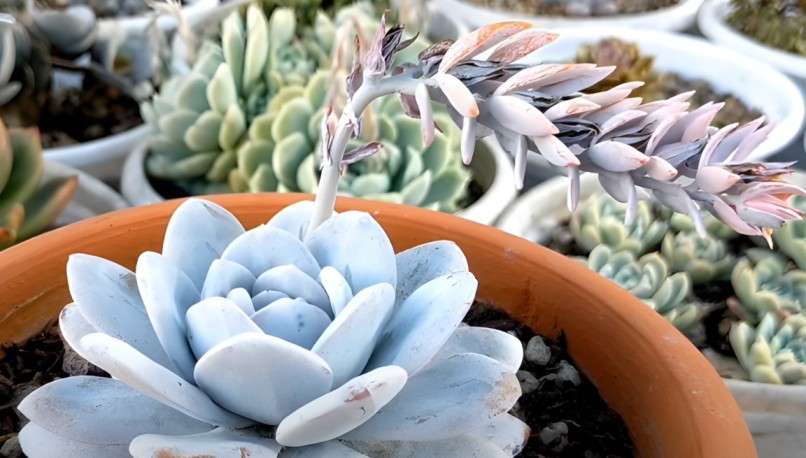
Addressing queries like where to buy, pricing, and online availability
Where to buy Echeveria-laui
Almost all brick-and-mortar and online garden centers sell Echeveria-laui succulents. In some specialty plant shops, you can also find it.
Pricing
Plant sizes and varieties can affect the price of Rose of Echeveria . An Echeveria-laui that is healthy, however, typically costs between $5 and $20.
Online availability
Several reputable retailers sell this plant online.Some of the most popular online retailers for Echeveria-laui include:
- Etsy
- eBay
- Amazon
- Succulents Depot
Echeveria Laui: Aesthetic Pleasure and Eco-Conscious Benefits
Amid the vast array of succulents, caring for an La Roseta emerges as a delightful journey, offering both aesthetic pleasure and intrinsic benefits. The powdery blue-green leaves of Echeveria-laui, when properly nurtured, embody resilience and beauty.
Beyond the sheer joy of tending to this succulent, the benefits extend to the broader landscape. Rose of Echeveria benefits the environment by contributing to air purification, making it an eco-conscious addition to any space.
Those considering echeveria laui buy options find themselves drawn not only to its captivating appearance but also to the inherent advantages it brings to home ecosystems.
Unlocking Full Potential: Geographical Aspects of Echeveria Laui Care
As we delve into the cuidados echeveria-laui, we uncover the key to unlocking its full potential. Caring for an echeveria-laui involves a delicate balance of La Roseta plant cura practices, catering to its specific needs based on geographical aspects.
Whether situated in the arid landscapes of Australia, the vibrant surroundings of Chile, or within the diverse terrain of Mexico, Rose of echeveria cuidados vary, ensuring adaptation to the local climate.
These geographical nuances dictate not only the plant’s care but also influence Rose of echeveria varieties and characteristics, from the striking color variations like echeveria-laui x colorata to the mesmerizing patterns of echeveria-laui x mexican monster.
The journey of echeveria-laui care extends beyond routine watering and sunlight exposure, evolving into a nuanced understanding of its habitat, fostering growth that mirrors the unique landscapes from which it originates.
Conclusion
Taking the time to care for Echeveria in Mexico’s Oaxaca region will reveal this succulent’s captivating beauty and resilience. Throughout the warmer months, Echeveria-laui blooms with a mesmerizing display of vivid blooms and powdery blue-green leaves.
A succulent’s adaptability to different conditions is showcased by its top care tips, which emphasize the importance of sunlight, wise watering practices, and well-draining soil.
This article describes propagating Echeveria-laui through cuttings, offsets, or seeds, addressing novices and experienced plant parents.
FAQs
How do you care for Echeveria laui?
In bright, indirect sunlight as well as well-drained soil, Rose of Echeveria thrives. Allow the pot to drain thoroughly after watering deeply when the soil is completely dry.
Dilution of a balanced liquid fertilizer to half strength should be used during the growing season.
How do you plant Echeveria laui seeds?
Make sure the seeds are properly drained and planted in a moist, but not soggy potting mix. Maintain a warm temperature and bright, indirect light. In most cases, germination occurs within two to four weeks.
Does Echeveria like direct sunlight?
Indirect sunlight is preferred by Echeveria-laui. It is possible for the leaves to scorch if they are exposed to direct sunlight for an extended period of time.
Sunlight during the morning is ideal for plants in hot climates; shade them during the hottest parts of the day.
How long does it take Echeveria laui to grow?
There is a moderate growth rate for Echeveria-laui. In general, mature Echeveria laui reach their full size after 3-5 years.
Can Echeveria laui grow indoors?
It is possible to grow La Roseta plant indoors as a houseplant. Ensure adequate light by placing a bright window facing South or by using a grow light.
Is Echeveria laui poisonous to humans?
There is no poisonous substance in Echeveria laui that can harm humans. Non-toxic and non-hazardous, it can be handled with ease.
How often should you water Echeveria laui?
When the soil has become completely dry, water Echeveria-laui deeply. Root rot can be prevented by draining the pot thoroughly. When the plant is dormant in the winter, water it less.
Why is my Echeveria laui dying?
In addition to overwatering, underwatering, pests, and root rot, there are several reasons why an Echeveria laui might be dying.
Ensure that the soil dries completely between waterings to prevent succulents from dying from overwatering.
Does Echeveria laui need sun?
Sunlight is necessary for the growth and survival of Rose of Echeveria . To achieve the best results, direct sunlight should be provided.
Is Echeveria laui toxic to pets?
It is not toxic to pets to consume Echeveria laui. Animals such as cats and dogs are not affected by it, and it is considered a non-toxic product.
Can Echeveria laui grow in shade?
Sunlight that is bright and indirect is preferred by Echeveria laui. Although it tolerates some shade, especially during the hottest part of the day, it doesn’t thrive in it.
Sunlight should be provided in the morning, but shade should be provided during the hottest parts of the day if you live in a hot climate.
When is the best time to fertilize my Echeveria laui?
During the growing season (spring and summer), fertilize Echeveria laui with diluted liquid fertilizer. In the winter, when plants are dormant, avoid fertilizing them.
Should I protect Echeveria laui from sun exposure?
For plants that are grown in hot climates, it is best to provide morning sun, but shade them during the hottest time of the day. It is possible to scorch the leaves if they are exposed to direct sunlight for a long period of time.
How can I keep my Echeveria laui warm in cold seasons?
Protect Echeveria laui from frost by bringing it indoors during cold weather. If you need more light, you can use a grow light or a bright, south-facing window.


